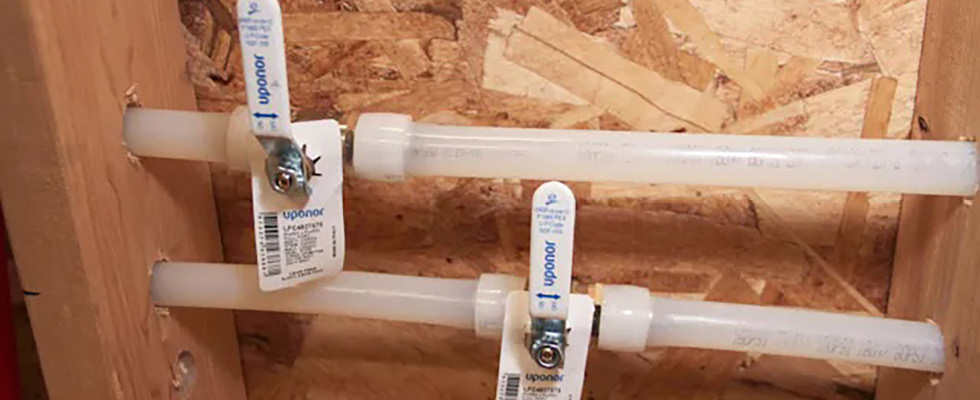
Not all valves are the same. For crosslinked polyethylene (PEX) piping systems, whether plumbing or hydronic heating and cooling, the type of valve that is specified and installed can actually impact system quality and performance.
Here are four essential points to consider before choosing a valve for a PEX piping project.
1. Regulatory Requirements
Building codes, manufacturing standards and listings set regulations for piping systems and components to govern the manufacturing, installation and inspection of products. The goal of these regulations is to protect human life, occupant health and the safety of the building.
That aside, they are also important to the bottom line. If valves are installed that do not meet a certain code, standard or listing required for the jurisdiction, the installer will be required to remove and replace them with the correct valves—at their own cost.
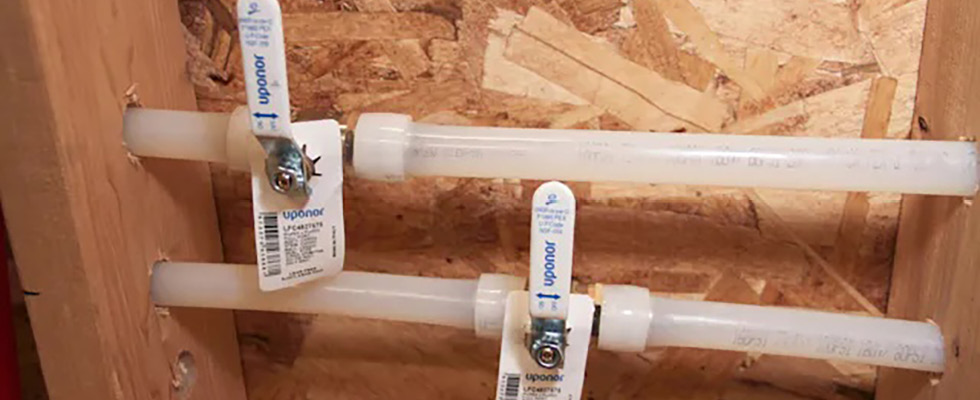
Any money that may have been saved on cheaper products just went down the drain with the replacement costs (as well as valuable time doing rework). For this reason, it is important to do the proper research. Installers must make sure the valves chosen comply with all necessary local, state and national building regulations.
Codes:
For residential potable plumbing applications, valves may need to meet some or potentially all of the following building codes: International Residential Code (IRC), International Plumbing Code (IPC), Uniform Plumbing Code (UPC) and National Standard Plumbing Code (NSPC).
For commercial potable plumbing applications, the valves may need to meet some or potentially all of the following building codes: International Building Code (IBC), IPC, UPC and NSPC. For residential hydronic heating and cooling applications, the valves may need to meet the International Mechanical Code (IMC) and/or the Uniform Mechanical Code (UMC). For commercial hydronic heating and cooling applications, the valves may need to meet the IBC, IMC and/or UMC.
Standards and listings:
For residential and commercial potable plumbing applications, the valves may need to meet some or potentially all of the following standards and listings: American Society for Testing and Materials (ASTM) F877, ASTM F1960 (exclusively for cold-expansion fittings), National Sanitation Foundation (NSF)/American National Standards Institute (ANSI) 14, NSF/ANSI 61, NSF/ANSI 359, NSF/ANSI 372 and American Society of Mechanical Engineers (ASME) A112.18.1.
For residential and commercial hydronic heating and cooling applications, the valves may need to meet some or potentially all of the following standards and listings: ASTM F877, ASTM F1960 (exclusively for cold-expansion fittings), NSF/ANSI 14 and NSF/ANSI 359.
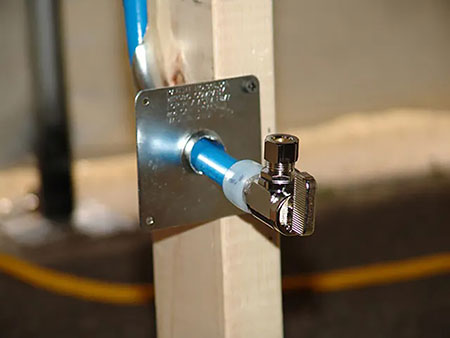
Also, if PEX systems with ASTM F1960 expansion connections are being installed, ASTM F1960 includes a list of recognized forged brass alloys. It is important to use valves manufactured using one of these certified alloys.
Some valve manufacturers state they are “tested” to ASTM F1960 or that they “conform” to ASTM F1960. However, that does not mean they are listed to ASTM F1960. Implying conformance by stating a valve is “tested to” or “conforms to” ASTM F1960 is misleading.
It is vital to install only a valve that is listed to ASTM F1960 to ensure the best possible quality and performance for a PEX piping system with cold-expansion connections.
2. Tube Stops
There are certain physical attributes on PEX piping system valves that are important to the performance of the valve itself, as well as the complete system performance. A positive tube stop is one of them. This design feature assists the installer in ensuring the valve is inserted into the pipe far enough without overextending the pipe past a certain point.
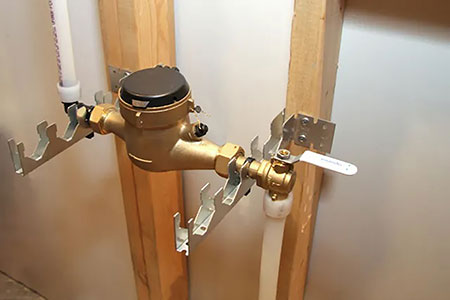
Without these positive tube stops, the potential for leaks due to improper connections is present. Installing valves with positive tube stops adds confidence for more consistent installations with less chance for leaks and callbacks.
3. Stem Features
A valve stem may seem inconsequential to the overall quality of a system. However, valves that feature blowout-proof stems are generally more reliable than ones that do not, and that is something to consider when choosing a valve for a PEX piping system.
Another key feature to have on valves is a stem extension. Some manufacturers offer stem-extension kits that make it fast and easy to accommodate insulation around the piping system without crushing or compromising the quality of the insulation. These kits can often accommodate insulation thicknesses up to 2 inches to help the systems comply with local energy codes.
4. Manufacturer Considerations
Lastly, it is important to consider the manufacturer. Some newer valve manufacturers have recently entered the PEX piping market and are offering products at a lower cost. The performance of these parts may not be verified, based on available certification or supporting data.
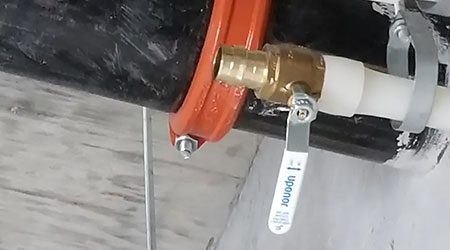
It is advisable to choose a product that has a proven history of reliability and performance. Make sure all valves are tested, listed and meet the required codes and standards for the PEX piping application being installed.
For more information about PEX piping systems, visit the Plastics Pipe Institute at plasticpipe.org or the Plastic Pipe and Fittings Association at ppfahome.org.

